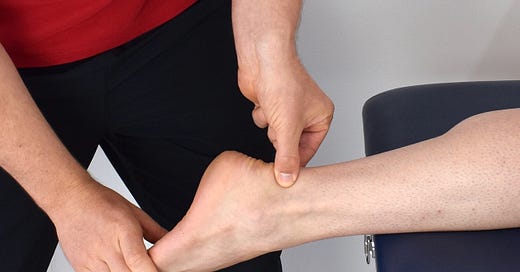Cipro scares me. So do Levaquin and all of the antibiotics in the fluoroquinolone family. It’s very concerning that Cipro, such a heavy-hitting antibiotic with numerous side effects, is being commonly prescribed for simple bladder infections (urinary tract infections).
I wanted to write today with a bit more information about how fluoroquinolone antibiotics, such as Cipro and Levaquin, work and the consequences of getting floxed. Before I dive in, I do want to say that these antibiotics can be lifesaving when used appropriately. However, I believe they are vastly overprescribed for infections that could be treated with less damaging antibiotics (or, even better, natural medicine!).
The generic forms of Cipro and Levaquin are ciprofloxacin and levofloxacin, respectively. You may hear people who have been injured by medications in this category say that they have been ‘floxed’.
How do these medications cause damage?
Like many medications, we don’t know 100% how they do damage. However, we do know that fluoroquinolone antibiotics can cause damage in a few different ways.
Deplete magnesium, calcium, and other minerals. Fluoroquinolones have a chelating effect on several minerals and this effect can damage collagen formation, while promoting the breakdown of collagen. No wonder we see joint, tendon, ligament, and muscle damage!
Damage DNA. Fluoroquinolone antibiotics work by targeting enzymes to damage bacterial DNA. Theoretically, these medications shouldn’t damage human DNA. However, fluoroquinolones may have a toxic effect on cells of mammals (and we are mammals!).
Alter brain function. Fluoroquinolones downregulate GABA receptors, which can lead to a variety of symptoms that originate from the brain itself. Remember that GABA promotes relaxation, which may be why we see so much anxiety in people who have been floxed. GABA also regulates muscle tone (tightness) and I have seen the muscle rigidity that can be a result of being floxed in patients who were given Cipro.
What symptoms are associated with fluoroquinolone toxicity?
Most symptoms that someone has who has been floxed center around the nervous system and the musculoskeletal system.
Nervous system: Dizziness, confusion, tremors, depression, insomnia, anxiety, neuropathy.
Musculoskeletal system: Damage to the cartilage joints, muscle pain, tendon rupture, weakness, muscle wasting.
Here are five strategies I have used with patients who have been floxed. Keep in mind that the road back to ‘normal’ after being floxed is long and slow, so being patient with the process is crucial (and extremely difficult!)
Magnesium. There are many types of magnesium out there and most floxed patients do best on magnesium glycinate, magnesium malate, or a blend of different types of magnesium. The trick is to watch for abdominal cramping and loose stools. That’s a sure sign that there’s too much mag on board!
GABA, especially if there are neurological symptoms. There are a lot of good GABA products out there, but one of my favorites is Zen 200 by Allergy Research. It’s available in my Fullscript store.
Sauna can be a great tool to enhance the detox process, but don’t overdo it. I advise patients to get out of the sauna BEFORE they feel depleted. My newest favorite sauna method is my sauna blanket, which I can easily use at home and hop out when I reel the time is right.
Collagen builders such as proline, lysine, Vitamin C, and collagen powder can help repair damage.
Glutathione. This master antioxidant is most effective when given via IV, but it can also be taken in capsule form or even inhaled via a nebulizer. My favorite oral glutathione is SafeCell by Tesseract, which you can find in my Fullscript store.
BONUS: Hyperbaric Oxygen Therapy can be very helpful to deliver more oxygen to damaged tissues and enhance the healing process. My brick and mortar practice, Aspen Integrative Medical Center, has a HBOT chamber if you’d like to see what one looks like.
If you have been floxed, you need to seek the care of a practitioner who is well-versed in this area. I have treated this condition in the past and, again, it is a long and difficult road to recovery. I should also point out that the risk of being floxed increases the more you take fluoroquinolone antibiotics. I have even had patients on the antibiotic for several days before noticing symptoms, so be aware of symptoms coming on even after the first few days!
I also want to point out that, for a simple and uncomplicated bladder infection, Cipro and Levaquin really shouldn’t be considered. There is an antibiotic called Macrobid that I find effective for almost all urinary tract infections. And I only default to Macrobid in the rare cases where natural treatment hasn’t worked or when my patient is out of town and doesn’t have other resources to treat their bladder infection.
I hope this information is useful to you. Please spread the word about the potential toxicity of this class of antibiotics.
Disclaimer: This information is for educational purposes and is not medical advice. Dr. Belt is a doctor, but she is not YOUR doctor. Consult a trained naturopathic doctor/functional medicine doctor to ensure safety and suitability based on your health and history.




